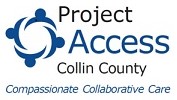Original Article – https://www.childrens.com/health-wellness/do-facemasks-prevent-coronavirus
The Centers for Disease Control and Prevention now recommends wearing a cloth face covering in public to help prevent the spread of COVID-19.
As cases of coronavirus disease 2019 (COVID-19) rise, many families are looking for information on the best ways to prevent its spread and to stay healthy. Researchers and health care officials are actively working to understand more about this pandemic, and new information is released every day.
Recently, the Centers for Disease Control and Prevention (CDC) released new guidelines stating that people should use a cloth face covering to cover their mouth and nose when around others in public. Learn why the CDC updated this recommendation and more ways to protect your family against COVID-19.
How do facemasks protect against the spread of COVID-19?
COVID-19 spreads from person-to-person, meaning that it can spread when an infected person coughs, sneezes or talks in close contact with another person. To help prevent this spread, the CDC recommends wearing a cloth face covering to cover your nose and mouth when around others in the community.
A cloth face covering is not meant to protect the person wearing it from catching the virus. Rather, its purpose is to prevent the person wearing the mask from spreading the virus to others. The CDC had previously recommended wearing a facemask only for people showing symptoms of COVID-19 or for those caring for or in close contact with an infected person. They’ve since updated this recommendation in case someone is infected but is not showing any symptoms.
Wearing a cloth face covering is an additional step that can help prevent the spread of COVID-19. It’s important to still take other precautions, including social distancing, even when wearing a mask.
Who should wear a cloth facemask – and when?
The CDC recommends that all people wear a cloth face covering when in public – except for children younger than 2 years old. Children under the age of 2 should not wear a facemask to avoid risk of suffocation. In addition, do not place a cloth face covering on anyone who has trouble breathing, is unconscious or cannot remove the mask without help.
Wear a cloth face covering in public places where social distancing is more challenging, such as grocery stores or when running other necessary errands. This is especially important in areas with significant community spread of illness. Continue to keep at least 6 feet between yourself and others to help prevent the spread of COVID-19.
When wearing a cloth mask, make sure it:
- fits snugly on your face and is secured
- includes multiple layers of fabric
- is breathable
- can be washed and machine dried without changing shapes
When removing your mask, avoid touching your eyes, nose and mouth and wash your hands immediately after removal. You should also routinely wash your face cloth covering after use.
The cloth face coverings recommended by the CDC are NOT the same as facemasks meant for health care workers. Medical or surgical masks and N-95 respirators should only be used by health care workers and other first responders.
Where can I find a cloth facemask?
Cloth masks may be available in some stores and online. The CDC also has instructions on its website to make your own cloth face covering from common household items. See their cloth mask tutorial here. They have included both sew and no-sew options for masks using cotton fabric, a t-shirt or even a bandana.
What are other ways to prevent the spread of COVID-19?
The best way to prevent COVID-19 is to avoid exposure to the virus. Even if wearing a cloth face covering in public, make sure your family is practicing these everyday precautions to prevent the spread of COVID-19:
- Practice proper hand hygiene (see tips for hand washing)
- Avoid touching your face with unwashed hands
- Avoid close contact with people who are sick
- Put distance between yourself and other people (see tips for social distancing with kids)
- Cover your coughs and sneezes with a tissue and throw away tissue in trash after sneezing
- Disinfect frequently touched objects and surfaces daily with a household cleaning spray or wipe
- Stay home if you are sick
For more resources to keep your family healthy, visit the Children’s Health℠ COVID-19 hub. To see continued updates as new information is shared, visit the CDC website.





